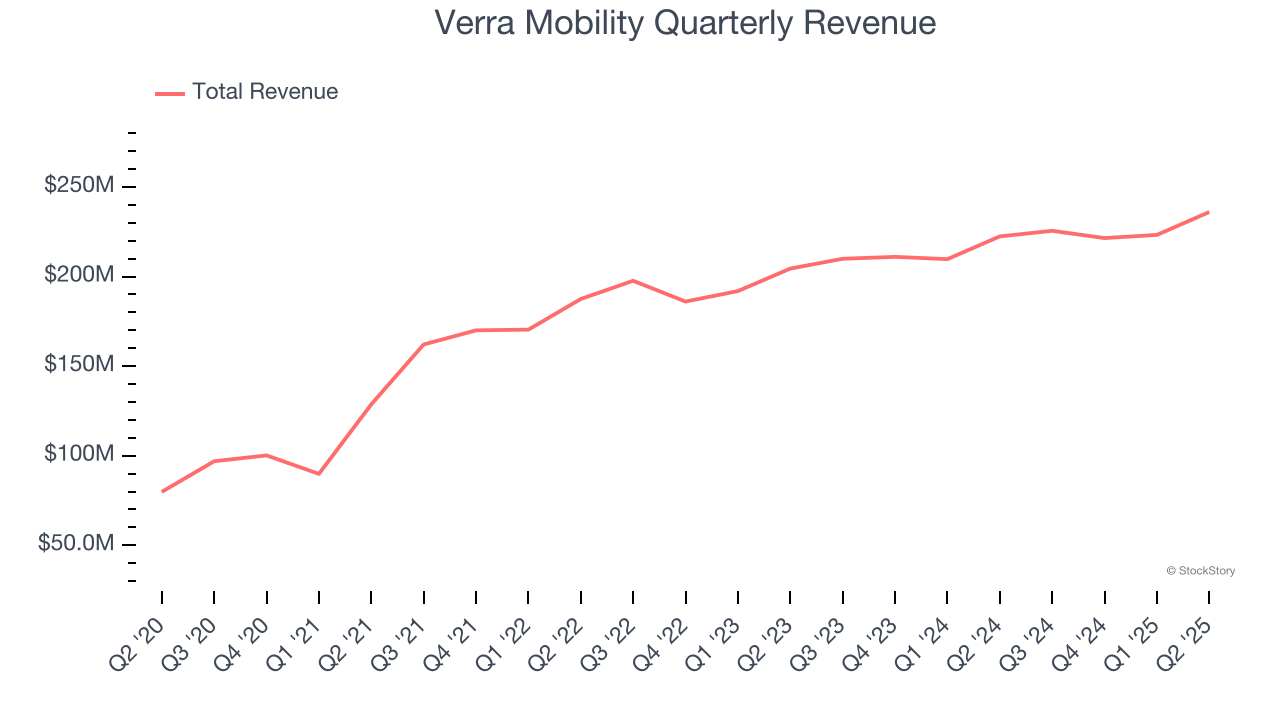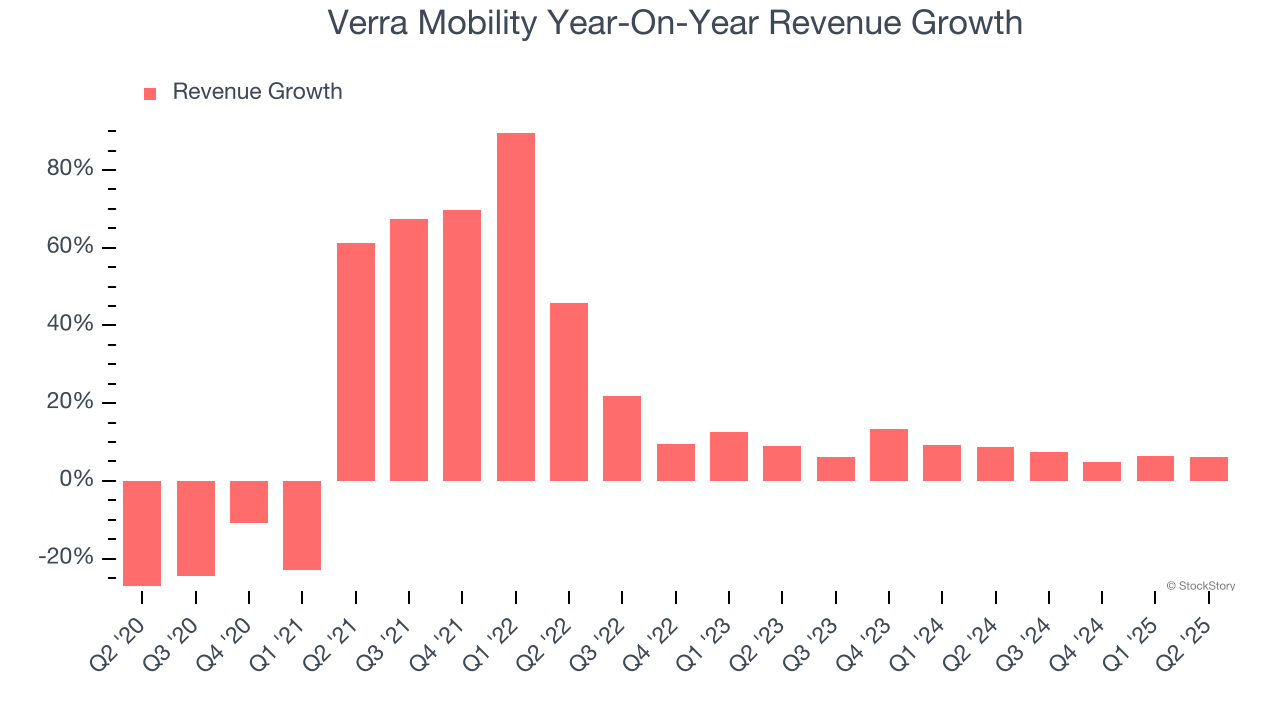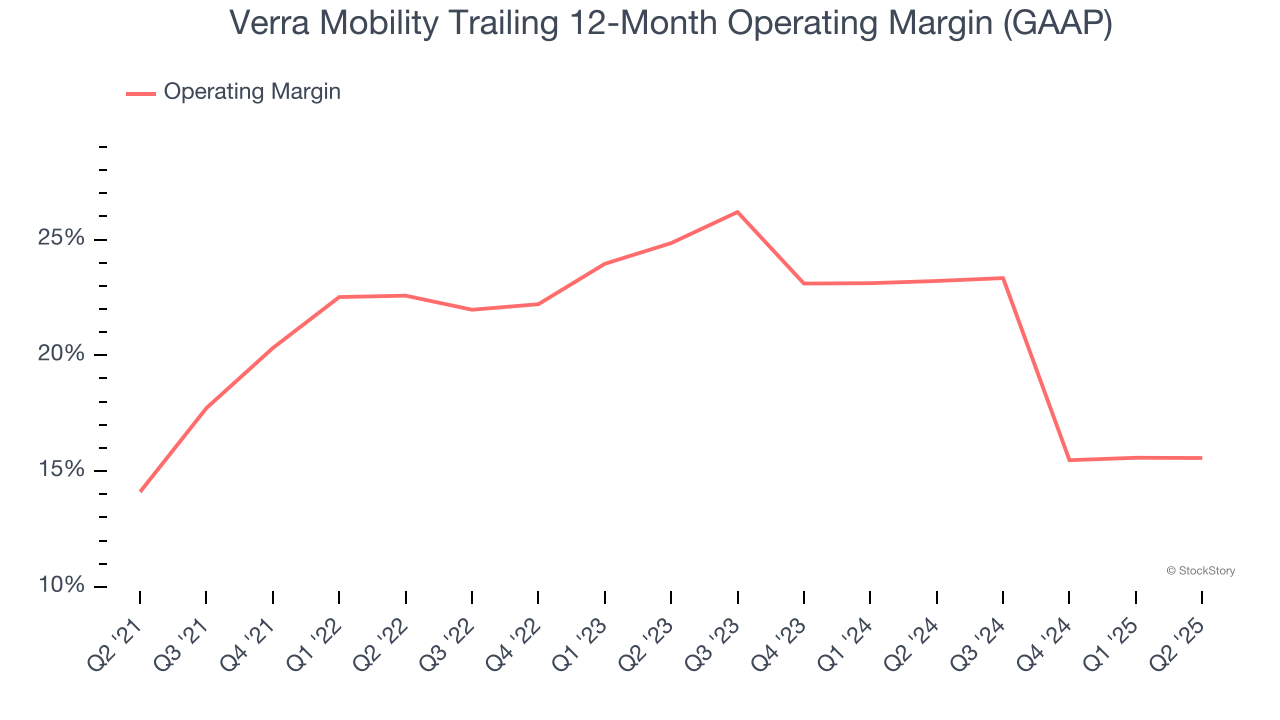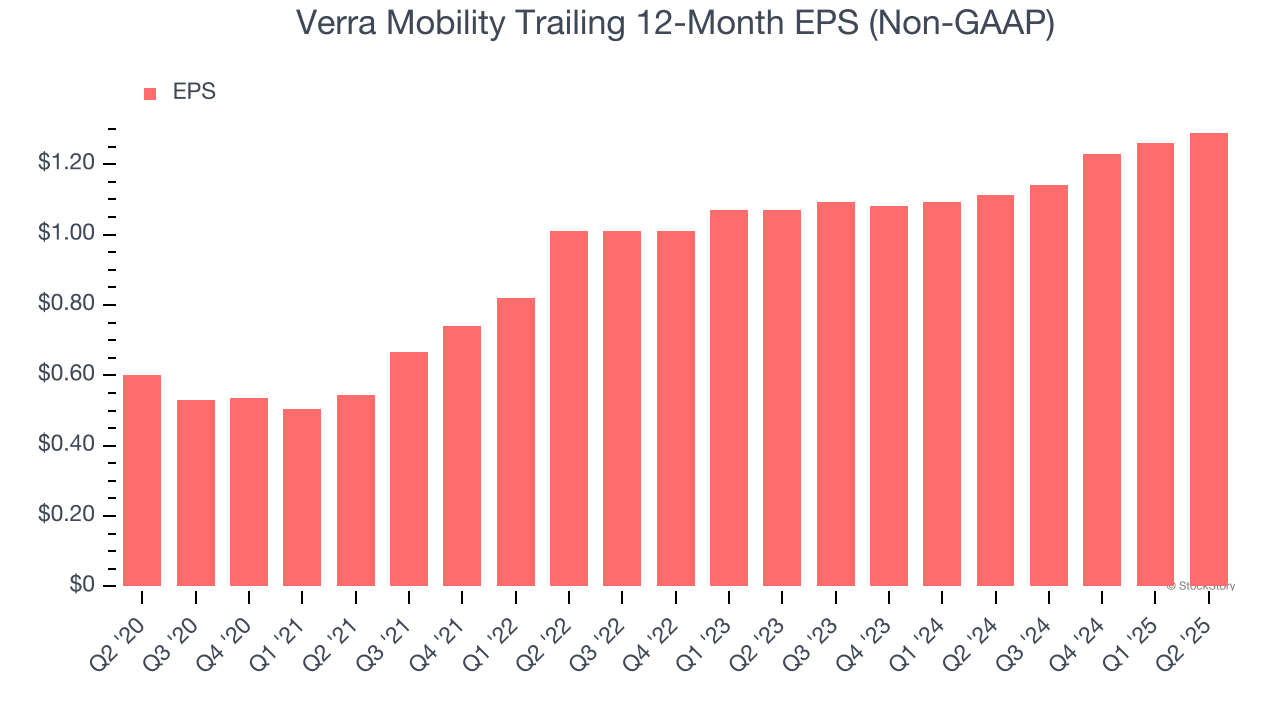
Traffic solutions company Verra Mobility (NYSE: VRRM) announced better-than-expected revenue in Q2 CY2025, with sales up 6.1% year on year to $236 million. The company expects the full year’s revenue to be around $930 million, close to analysts’ estimates. Its non-GAAP profit of $0.34 per share was 3.3% above analysts’ consensus estimates.
Is now the time to buy Verra Mobility? Find out by accessing our full research report, it’s free.
Verra Mobility (VRRM) Q2 CY2025 Highlights:
- Revenue: $236 million vs analyst estimates of $233.1 million (6.1% year-on-year growth, 1.3% beat)
- Adjusted EPS: $0.34 vs analyst estimates of $0.33 (3.3% beat)
- Adjusted EBITDA: $105.3 million vs analyst estimates of $103.1 million (44.6% margin, 2.1% beat)
- The company reconfirmed its revenue guidance for the full year of $930 million at the midpoint
- Management reiterated its full-year Adjusted EPS guidance of $1.33 at the midpoint
- EBITDA guidance for the full year is $415 million at the midpoint, in line with analyst expectations
- Operating Margin: 26.8%, in line with the same quarter last year
- Free Cash Flow Margin: 17.1%, up from 11.7% in the same quarter last year
- Market Capitalization: $4.01 billion
"We delivered a strong second quarter with all key financial measures ahead of our internal expectations," said David Roberts, President and CEO, Verra Mobility.
Company Overview
Aiming to wrap technology and data around a historically manual and paper-based industry, Verra Mobility (NYSE: VRRM) is a leading provider of smart mobility technology to address tolls and violations, title and registration services, as well as safety and traffic enforcement.
Revenue Growth
Reviewing a company’s long-term sales performance reveals insights into its quality. Any business can experience short-term success, but top-performing ones enjoy sustained growth for years. Thankfully, Verra Mobility’s 15.7% annualized revenue growth over the last five years was incredible. Its growth surpassed the average industrials company and shows its offerings resonate with customers, a great starting point for our analysis.

We at StockStory place the most emphasis on long-term growth, but within industrials, a half-decade historical view may miss cycles, industry trends, or a company capitalizing on catalysts such as a new contract win or a successful product line. Verra Mobility’s annualized revenue growth of 7.8% over the last two years is below its five-year trend, but we still think the results were respectable. We also think Verra Mobility’s is one of the better Electrical Systems businesses as many of its peers faced declining sales because of cyclical headwinds. 
This quarter, Verra Mobility reported year-on-year revenue growth of 6.1%, and its $236 million of revenue exceeded Wall Street’s estimates by 1.3%.
Looking ahead, sell-side analysts expect revenue to grow 7% over the next 12 months, similar to its two-year rate. This projection doesn't excite us and implies its newer products and services will not lead to better top-line performance yet. At least the company is tracking well in other measures of financial health.
Software is eating the world and there is virtually no industry left that has been untouched by it. That drives increasing demand for tools helping software developers do their jobs, whether it be monitoring critical cloud infrastructure, integrating audio and video functionality, or ensuring smooth content streaming. Click here to access a free report on our 3 favorite stocks to play this generational megatrend.
Operating Margin
Operating margin is an important measure of profitability as it shows the portion of revenue left after accounting for all core expenses – everything from the cost of goods sold to advertising and wages. It’s also useful for comparing profitability across companies with different levels of debt and tax rates because it excludes interest and taxes.
Verra Mobility has been a well-oiled machine over the last five years. It demonstrated elite profitability for an industrials business, boasting an average operating margin of 20.5%. This result isn’t surprising as its high gross margin gives it a favorable starting point.
Looking at the trend in its profitability, Verra Mobility’s operating margin rose by 1.5 percentage points over the last five years, as its sales growth gave it operating leverage.

In Q2, Verra Mobility generated an operating margin profit margin of 26.8%, in line with the same quarter last year. This indicates the company’s cost structure has recently been stable.
Earnings Per Share
We track the long-term change in earnings per share (EPS) for the same reason as long-term revenue growth. Compared to revenue, however, EPS highlights whether a company’s growth is profitable.
Verra Mobility’s spectacular 16.5% annual EPS growth over the last five years aligns with its revenue performance. This tells us its incremental sales were profitable.

Like with revenue, we analyze EPS over a shorter period to see if we are missing a change in the business.
For Verra Mobility, its two-year annual EPS growth of 9.8% was lower than its five-year trend. This wasn’t great, but at least the company was successful in other measures of financial health.
In Q2, Verra Mobility reported adjusted EPS at $0.34, up from $0.31 in the same quarter last year. This print beat analysts’ estimates by 3.3%. Over the next 12 months, Wall Street expects Verra Mobility’s full-year EPS of $1.29 to grow 9.7%.
Key Takeaways from Verra Mobility’s Q2 Results
It was good to see Verra Mobility narrowly top analysts’ revenue expectations this quarter. We were also happy its EBITDA outperformed Wall Street’s estimates. Overall, this print had some key positives. The stock remained flat at $24.96 immediately after reporting.
Should you buy the stock or not? The latest quarter does matter, but not nearly as much as longer-term fundamentals and valuation, when deciding if the stock is a buy. We cover that in our actionable full research report which you can read here, it’s free.





